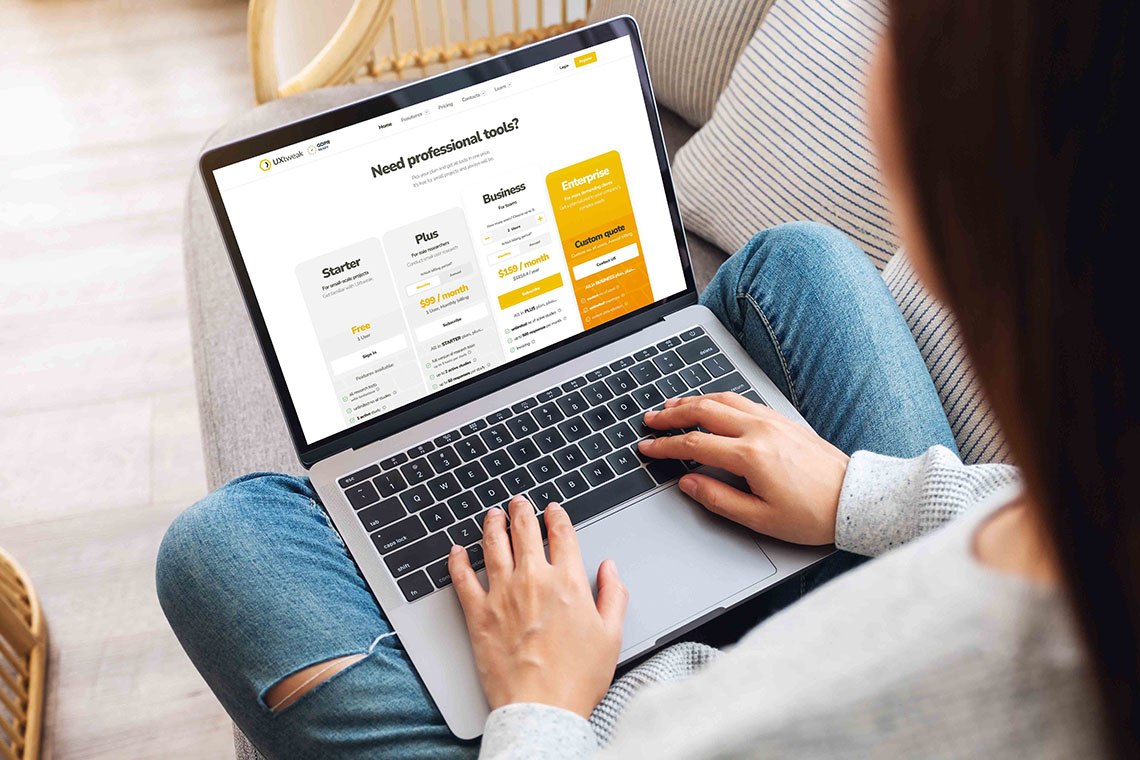Key takeaways
🏷️ Qualitative coding means labeling user feedback to find meaning. It helps you turn raw text into patterns and themes you can act on.
📥 Deductive coding starts with a predefined set of codes. Meanwhile, inductive coding lets themes naturally emerge from what users actually say.
🧪 Interviews, usability testing, and support tickets are all rich sources. You can turn them into insights by coding what people say and do.
🧰 Free qualitative coding software like NVivo, MAXQDA, or even Excel can help. Choose what fits your workflow and collaboration needs.
🐝 UXtweak records every session, so you don’t miss real-time behavior or emotion. This gives you both qualitative and quantitative layers in one place.
In UX research, data is everywhere, but its meaning is usually hidden in the details. This is where qualitative coding comes in. It helps you turn raw user feedback into patterns, themes, and insights you can actually use.
It’s so effective that 77% of UX researchers use qualitative methods to extract valuable information from text-based datasets.
In this guide, we’ll show you how to become one of those researchers, making smarter decisions by uncovering the right data.
Let’s dive in.
What is coding in qualitative research?

Coding in qualitative research is the process of labeling and organizing raw text-based data so that you can identify themes, patterns, and UX insights.
The datasets in this research include interview transcripts, open-ended survey responses, and usability session notes.
In simple terms, qualitative coding means assigning “codes” (short phrases or keywords) to specific segments of data that represent similar ideas or issues.
These codes act like tags and help you group similar responses and start making sense of what users are telling you.
Two qualitative coding methods
When it comes to analyzing qualitative data, you can take two main approaches: deductive coding or inductive coding. Both methods help you uncover insights, but they differ in how the codes are developed. Let’s explore the types of qualitative coding in detail.
1. Deductive coding (top-down approach)
Deductive coding in qualitative research starts with a predefined list of codes or themes, often based on your UX desk research goals or past studies. You go into the data already knowing what you’re looking for.
📌 Example: If you’re testing a new onboarding flow, your initial codes might include confusion, engagement, task success, or feature discovery. As you review feedback, you tag each comment using these categories.
2. Inductive coding (bottom-up approach)
Inductive coding in qualitative research means you start with a blank slate. You don’t assign codes until you’ve read through the data. This allows themes to emerge naturally from what users actually say, not what you expect to hear.
📌 Example: Let’s say you interview 10 users and notice they all mention “too many pop-ups,” even though you didn’t ask about them. That theme becomes a code, even though it wasn’t part of your original research plan.
💡 Pro Tip
Many UX researchers use a hybrid approach, starting with a few deductive codes, then layering in inductive ones as new patterns emerge.
Qualitative coding step-by-step + example
If you’re new to qualitative coding, the process may seem overwhelming at first. But once you break it down into clear steps, the process becomes manageable and even enjoyable.
The goal is simple: make sense of what people are saying and turn that into actionable insights.
Here’s the coding manual for qualitative researchers with qualitative coding examples to turn raw data into meaningful insights:
Step 1: First round of coding (initial pass)
The first step is to read carefully without coding qualitative data yet. Start by reviewing the full transcript or responses. Take notes, highlight interesting phrases, and observe tone, repetition, and emotions.
Once you’re familiar with the data, begin coding by breaking it into chunks and assigning each one a code. You can do this for sentences, lines, or even small paragraphs.
Did you know? 💡
In the r/AcademicPsychology subreddit, users point out how important it is to build a clear codebook as early as possible, even if it’s rough.
This keeps your process consistent across different interviews or rounds of analysis, especially when working with a team.
This stage is all about exploration. You’re not organizing the data yet, just highlighting what stands out. There are various types of coding in qualitative research to help with this process, each suited to different goals and data types.
🧩 Open coding
Open coding involves breaking the data into small parts and labeling each part with a word or phrase that describes its content. It’s a flexible and explanatory method. You don’t start with a list of codes; you let the data guide you.
📌 Example: User says, “I got stuck on the sign-up screen and had to restart.”
Code: signup barrier
🧩 In Vivo coding
Vivo coding uses exact words from the participant as the code. This is useful when you want to stay close to the user’s voice and capture their unique expressions or frustrations.
📌 Example: User says, “It’s just too many clicks.”
Code: “too many clicks” (as is)
🧩 Process coding
This method captures actions or sequences by using verbs ending in “-ing”. It’s good when users describe what they are doing or trying to do.
📌 Example: User says, “I kept refreshing to check if the payment went through.”
Code: refreshing for confirmation
🧩 Descriptive coding
Descriptive coding summarizes the general topic of a sentence or comment. It doesn’t interpret or guess emotion; it just labels the subject clearly.
📌 Example: User says, “I only use the app during sales.”
Code: usage pattern
🧩 Emotion coding
This method tags any emotion expressed in the response, such as frustration, joy, or anxiety. You can capture how the user feels through this one.
📌 Example: User says, “I was disappointed with the checkout errors.”
Code: disappointment
🧩 Value coding
Value coding captures beliefs, values, or personal opinions that guide user decisions or reactions.
📌 Example: User says, “I think brands should be more honest about fees.”
Code: value of transparency
🧩 Evaluation coding
This type of code is used when users express a clear judgment, positive or negative, about a feature, design, or experience.
📌 Example: User says, “The new interface is cleaner and easier to use”
Code: positive evaluation.
🧩 Structural coding
Structural coding uses codes to categorize responses by question, theme, or section of the interview. It’s organizational rather than interpretive.
📌 Example: If Question 3 was about onboarding, all responses to it can be tagged as “Q3_onboarding”
Code: need for structure
Step 2: Organize codes into subgroups (grouping phase)
After going through the first round of coding, you’ll have many individual codes. That’s why in this step, we’ll focus on grouping similar codes together under broader categories.
Think of this as organizing your closet; you’re taking similar pieces and putting them into labeled boxes.
📌 Example: Codes such as signup barriers, loading delays, and error message confusion can all be grouped under “technical obstacles.”
These grouped codes become themes or patterns that represent bigger ideas in the user experience.
Step 3: Reevaluate your subgroups (second round of coding)
Now that your codes are grouped, it’s time to revisit them with a purpose and understand what you’re trying to learn from the data. This helps you refine the categories using more advanced coding techniques:
1. Thematic analysis
In this UX research analysis, you search for repeated themes across the data. Consider these the bigger ideas that can help answer your research question.
To apply this, re-read your subgroups and label the central message of each group (e.g., lack of trust, usability confusion).
2. Axial coding
In Axial coding, you link categories together. Ask questions like: What causes this? What is the result? It’s about discovering links between different categories.
💡 Pro Tip
Take any two related themes, such as navigation frustration and drop-off after 2 minutes, and write down how they influence each other. In this example, you can build a simple narrative like: Poor navigation leads to early abandonment.
3. Selective coding
Selective coding means choosing the most essential themes and building your report around them. You discard anything that’s unrelated to your main goal.
Start by identifying the top 2-3 recurring, high-impact themes. Then support each one with specific quotes and examples. Make sure to focus on findings that answer your key research question and keep your report focused.
4. Elaborative coding
The elaborative coding method connects your current code to previous user research or known models. It’s useful when you want to validate or challenge existing theories.
To apply this, compare current codes with a past study or framework (like the usability heuristics). Then, add new codes if you see deeper insights and highlight any gaps or confirmations.
Step 4: Prepare the research report
Turn your codes and insights into a clear, actionable report. Your report should:
👉 Introduce your research question or goal
👉 Describe your methodology briefly
👉 Present key themes with supporting quotes or charts
👉 Offer recommendations based on the findings
Use visuals like heatmaps, word clouds, or journey maps to add clarity. Always link your insights to real user needs, not just abstract trends.
💡 Pro Tip
Don’t treat your initial codes as final. Revisiting and refining them, sometimes multiple times, leads to much stronger thematic clarity in your final analysis.
Applying the steps in real life
Let’s say you conducted five interviews about a mobile banking app’s login process. Now, this is how this analysis will look.
Initial coding:
- The user says, “I had to reset my password three times.”
- You apply process coding: resetting password, and emotion coding: frustration.
Group codes:
- Combine resetting passwords, 2FA errors, and face ID failure into login issues.
Axial coding:
- Discover a pattern: login issues often lead to abandoning the app.
Thematic focus:
- Focus your report on two main insights: trust barriers in security and technical friction during login.
Report outcome:
- Suggest a clearer reset flow and testing biometric alternatives.
Best qualitative coding software
When it comes to free qualitative coding software, several tools can make the process easier and more organized. Some popular options, such as NVivo, Atlas.ti, and MAXQDA, are specifically designed for coding and analyzing qualitative data.
For those who prefer simple or visual tools, Miro and Trello can be used to map out codes and categories. Even Microsoft Excel works well for creating codebooks and sorting for a more hands-on approach.
Ultimately, the best choice depends on your workflow, budget, and whether you’re coding solo or as part of a team.
How to use AI for qualitative research coding

Using AI for qualitative research coding is becoming increasingly popular, especially when dealing with large datasets.
Tools like ChatGPT, Delve, Quirkos AI, and NVivo’s auto-code can help you identify repeated themes, generate initial codes, and organize responses quickly. This could save hours during the early stages of UX task analysis.
However, AI doesn’t fully understand emotional tone, sarcasm, or cultural nuance. That’s why it’s best to use it as an assistant, rather than a replacement.
You should always review AI-generated code manually to ensure accuracy and relevance.
Moreover, use AI only to handle repetitive tasks, then refine the results using your own judgment and expertise. That way, you get speed without losing depth or insight.
In short, while helpful, AI tools aren’t foolproof. As one Reddit user warned:
I tried a thematic analysis with ChatGPT… it just straight‑up made up the data.
How to gather data for qualitative coding
Before you can code anything, you need to collect rich, meaningful qualitative data. There are several methods researchers use to do this, each producing different types of input you can later organize and code.
Here are five commonly used approaches and how they translate into materials ready for qualitative data coding:
💡 User interviews
User interviews are one of the most effective methods for gathering qualitative data. You ask open-ended questions and let participants describe their experiences, frustrations, and needs in their own words.
After each session, you can transcribe the interview or take detailed notes. For coding, you’ll focus on recurring phrases, emotional cues, and specific user pain points.
Want to include user interviews in your UX research?
Try UXtweak’s Live Interviews!
Seamlessly schedule, recruit, conduct, and analyze your all user interviews.
⬇️ Learn more about the feature and be the first to try it!
💡 Moderated usability testing
In moderated usability tests, users perform tasks while speaking aloud, and a facilitator observes their behavior and asks questions. This approach helps uncover real-time challenges and reactions.
Studies show that UX research can decrease usability issues by 50%. This means coding can help reduce issues by identifying where the problem is originating from.
You can record both user actions and verbal feedback. Then, you can later code insights based on confusion, satisfaction, or task success.
💡 Field studies
Field studies involve observing users in their natural environments, such as their homes, offices, or while using a product on the go. This method provides context-rich data that reflects real-world behavior.
The result may include notes, photos, or video recordings, which you can code based on environment, habits, or usage patterns.
💡 Open card sorting
In open card sorting, users organize information (e.g., features, topics) into groups that make sense to them. It reveals how users manually categorize content.
After the session, researchers analyze participant groupings and rationales. For this, the coding mainly focuses on themes in how users structure information or what labels they assign.
UXtweak’s card sorting tool is perfect for this – it helps you uncover how people naturally organize content, making analysis fast and intuitive.
🔽 Try card sorting and tree testing yourself in these demos!
💡 Support tickets and customer feedback
Support tickets, chat logs, and user-submitted feedback are passive sources of qualitative data that reflect real issues. These are especially valuable because they are unsolicited and spontaneous.
For data collection, you can categorize comments based on product areas, emotion, or problem type during coding.
As Dr. Maria Panagiotidi notes,
By categorizing data and identifying patterns, UX professionals can uncover new insights that may not have been apparent before, increasing the validity of the study and ensuring findings are based on data rather than bias.
The best tool to gather qualitative data

UXtweak is a powerful platform designed to help researchers collect high-quality qualitative data across different user research methods. It gives you all the tools in one place, including surveys and usability tests.
What makes UXtweak effective for qualitative research is its session recording feature, now available across all study types. This allows you to gather qualitative insights even during studies that are typically quantitative.
You can see exactly how users interact with your product, hear their thoughts in real-time, and uncover frustration points or hesitations you might otherwise miss.
Here’s how UXtweak helps gather rich qualitative data:
- User interviews: Use the user interview feature to collect participant feedback and behavior, then review session recordings to spot patterns and emotional cues.
- Moderated and unmoderated usability testing: Watch how users complete tasks, analyze their behavior with screen recordings, and combine findings with verbal feedback.
- Card sorting and tree testing: Go beyond just click paths; session recordings allow you to observe users’ reasoning and hesitation as they organize content or navigate menus.
🔽 Try UXtweak’s session recording and usability testing tools yourself!
Summing up
Qualitative coding helps you turn messy, open-ended feedback into clear insights you can actually use. Whether it’s spotting patterns in interviews or finding pain points in usability tests, coding gives structure in the chaos.
Start simple. Focus on what users say and why they say it. Don’t get stuck chasing perfection. Remember, clarity matters more than complexity.
If you’re still stuck in the data collection phase, UXtweak can help you out there. It provides you with the tools to gather data through interviews, usability tests, and other methods.
Try UXtweak for free today and find out what your users are really saying. 🐝










📌 Example: If users repeatedly mention “confusing navigation,” that feedback might get coded as navigation frustration or UI clarity. When enough people express similar points, you know it’s not random, it’s a trend worth addressing.